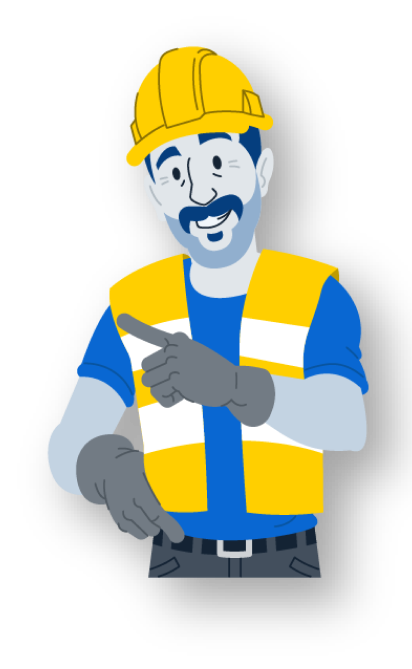Want your business to grow exponentially? Save precious time? Rake in the big bucks? (Oh dear — I’m starting to sound like a car salesman…) If you’re hoping to scale, do yourself a favor and read through to the bottom of this webinar recap. You’ll thank me later.
In this webinar, CompanyCam Business Development Rep Nick Brouillette was joined by Brett Scott of Roofer’s Choice Insurance. When it’s time to start saving REAL time and money, limiting liabilities on the job site is a good place to start. A lot was covered during the webinar, so here’s the breakdown:
Importance of photo documentation
How it relates to insurance claims
And where the time-saving, money-making part comes in.
Let’s get to the meat of it.
The Importance of Documentation
When a job site gets hectic, documentation can take a backseat to the immediate needs of the job. However, the importance of meticulous documentation should not be overlooked. Documentation plays an important role in team accountability, legal protection, gathering marketing materials, and limiting liability — which ultimately conserves your hard-earned money.



Legal Benefits
Legal protection is a common reason for thorough documentation on a job site. Having a detailed record of all activity and decisions made during the project will serve you well in the long run. Should there ever be a dispute, false claim, or legal issue, comprehensive documentation can (and WILL!) provide preeminent evidence to support your case.
Brett and Nick talked about legal liability on the job site. Nick says it’s one of the most common things he hears from contractors, be it about a cracked driveway, broken screen window, deck paint getting scratched, etc.
When asked, “Have you ever been accused of something you didn’t do?” Brett says he has seen a variety of accusations, for example, “nail-in-foot claims” or tile-roof claims. These have resulted in companies being blamed for not cleaning up after the work is done for the day. “There are all sorts of accusations that we have to work through,” Brett says. One thing can lead to another in such cases. It’s not uncommon to end up with a lawsuit on your hands.
Getting ahead of the false claims and covering your company’s butt is important!



Quality Assurance Benefit
If you’ve done the job right, let’s hope you documented it—for future marketing purposes. Show off your work to others! Sharing transformative Before and After photos attracts new customers and boosts team morale. Use your job site photos for marketing!
And if you’ve done the job wrong, let’s hope you documented it—pinpoint the areas in which it went wrong and roadblocks to avoid in the future.
When guidelines and best practices are captured and shared clearly, crews, admin, customers, and subcontractors are more likely to follow them. Following the standards reduces the risk of error and rework — saving you time and money!



Accountability Benefit
Crew accountability is taken to a new level when photo documentation is involved. Whether your crew is big or small, having an easy-to-follow trail of documentation improves team communication and ensures everyone is on the same page.
Documentation makes it easier to identify what, when, and why decisions were made. This transparency creates a culture of accountability, prevents finger-pointing, and gets rid of the he-said-she-said issue altogether!
How Documentation Impacts Insurance Claims
This is where the limiting liability comes in.
Nick asked Brett a pivotal question: “Have you ever had an insurance claim denied due to lack of documentation?” Short answer: Ohhh yes.
Brett says, “There are a lot of forms and endorsements now throughout the industry that are gonna require documentation.” There are set forth requirements contractors must adhere to for insurance coverage to be met. It’s important to know what the endorsements mean, how they should be interpreted, and what the adjustor is going to look for come claim time! Documentation is often a critical part of that process.
The bottom line is this: Insurance claims are impacted by thorough documentation because documentation increasingly limits liability. Documenting safety protocols and standards prevents a workplace from becoming unsafe (or at least holding individuals accountable for following the guidelines). In the event of an accident, having documentation on hand can save you from a nasty lawsuit… EXHIBIT A.
Plans change. Plans change OFTEN on a job site. Ensure you document all change orders, cost adjustments, scope changes, and client approvals. This helps prevent conflict or disputes down the road.
Take it from Brett: “Documentation is critical.” If you aren’t documenting properly, working with insurance companies is going to be a struggle.
Let’s Save Time and Money!
Documentation limits liability in the workplace.
So! When liability is limited, it makes your premiums more cost-effective and improves your business relations with insurance carriers. Liability + Documentation = $$$. Simple math!
Start taking documentation more seriously today. Whether you begin by sorting through your job site photos or transparently sharing job site footage with clients (or BOTH with CompanyCam), start with small steps today, and you’ll see results immediately.





